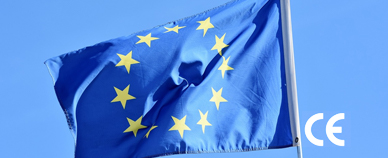EPD Environmental Product Declaration
Legal overview
Environmental Product Certification (EPD) is a Type III environmental declaration based on the ISO 14025 standard. It is a third-party verified, scientific, comparable and internationally recognized comprehensive disclosure of information on the environmental impact of products throughout the product life cycle.
EPD does not evaluate the conformity of products, does not compare the advantages and disadvantages of products, but helps governments, industry experts, buyers, consumers, etc., better understand the comprehensive environmental impact of products, and whether they are sustainable.
EPD is based on life cycle assessment (LCA), which discloses the environmental impact of a product or service on non-renewable resources, ecosystems, human health and other aspects during the whole life cycle of raw material acquisition, production, transportation, consumption, and final disposal. These impacts provide consumers, buyers, and others with scientific, verifiable, and comparable environmental information related to a product or service. Therefore, EPD is considered to be the most powerful support tool for government green procurement and product eco-design.
Scope of application
EPD Environmental product declaration will become a mandatory certification requirement for products exported to Europe.
At present, there are 12 types of products that can be EPD certified: chemical products, building products, power energy products (e.g. Photovoltaic modules), food and beverages, furniture products, infrastructure and buildings, machinery and equipment, metal plastics and other packaging materials, service products, paper products, textile and apparel products, vehicle transportation products, the products that can declare EPD cover almost the whole industry.
Benefits of EPD reporting
1. Promote energy conservation and emission reduction: EPD report results will present global warming potential values in different processes. It further helps enterprises to set scientific emission targets and formulate emission reduction strategies.
2, Grasp the product environmental information: EPD report will provide no less than 13 core environmental impact indicators results. Complete and relevant indicator results can help enterprises effectively understand the environmental impact of products or services, and assist enterprises to complete effective communication of environmental information between B2B and B2C.
3, Promote the establishment of sustainable markets: By publishing open, transparent, and third-party verified EPD reports, companies not only establish a green brand, high consumer environmental awareness, but also participate in the establishment of environmentally sustainable markets.
4, advantage in product bidding: EPD reports are usually more advantageous when companies need to be in green public procurement (GPP), or in the bidding process.
5, scientific development of emission reduction strategy: Through scientific modeling and analysis, EPD report results can help enterprises effectively understand the environmental information and impact of products and services in the effective period, and help enterprises to develop energy conservation, emission reduction and environmental protection measures in advance.

The services we provide
Zhongbang has a professional team of low-carbon experts, providing product life cycle assessment (LCA) based product EPD, carbon footprint and other standards construction, product evaluation and certification, registration and release services, support green technology and product demand service docking, help enterprises to achieve green transformation.
- • Life cycle assessment: Product Carbon Footprint (PCF), Product Environmental Footprint (PEF)
- • Product Low-carbon Certification: Environmental Product Declaration (EPD certification)
- • Recycled materials certification: ISCC Plus certification, GRS certification, RCS certification,
- • Supply chain sustainable information disclosure: organizational carbon inventory, CBAM data filling, CDP climate questionnaire filling, EcoVadis certification, SBTi certification, ESG report preparation
- • Registration system construction and physical examination pre-examination consulting service
Zhongbang is one of the earliest institutions in China to engage in compliance consulting services. It has a senior expert team composed of PhDs, Masters, and Bachelor's degrees, and has established branches in the UK, the United States, South Korea, Beijing, Shanghai, Suzhou, Fuzhou, Shenzhen, and other places, forming a global service network layout.
-
Strong technical strength:
A strong team composed of mid to senior technical personnel with professional backgrounds in chemistry, food nutrition and health, medicine, biology, toxicology, environment, and other fields
-
International service level:
A business elite team with multiple languages including English, Japanese, German, and Chinese, efficiently serving international customers
-
Rich compliance experience:
With years of experience in global product and regulatory research in multiple fields, we are able to provide comprehensive and high-level compliance consulting support to various customers
-
Localized service capabilities:
Having multiple branch offices in the UK, USA, South Korea, Beijing, Shanghai, Suzhou, Fuzhou, Shenzhen, etc., we can provide you with services nearby
Service Hotline :400-115-9001
Zhongbang Consulting (Shandong Zhongbang North Management Consulting Co., Ltd.) focuses on product registration and compliance consulting services. With its professional technology, diverse resources, and global network, we are committed to providing regulatory consulting and environmental regulation response services for pharmaceutical, chemical, consumer goods production enterprises, and large multinational corporations. To solve the environmental, health and safety laws and regulations, product quality standards, and other issues faced by enterprises in production, sales, and global trade processes.
Accumulated Customers
18,000+
Distributed in 35 countries and regions
14year
Industry experience
260+
Senior expert team
15+
Subsidiaries
300+
Collaboration Cases
Brand Cases
The choices and trust of over 18000 customers are the driving force for Zhongbang to continuously improve its services. We are willing to grow together with these excellent enterprises
Service Hotline:400-115-9001






































































 Consultation
Consultation
 400-115-9001
400-115-9001